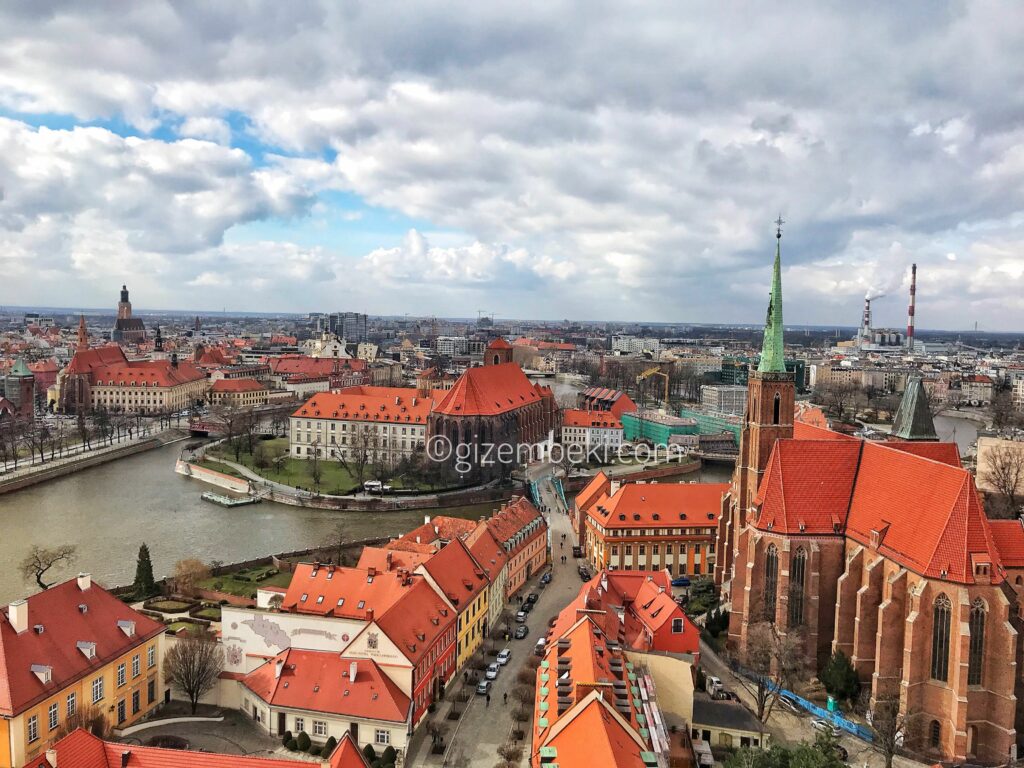Türkçe | English
With its growing popularity after being selected as the European Capital of Culture together with San Sebastian in 2016, Wroclaw is the 4th largest city in Poland. In other words: City of Gnomes: Wroclaw
Short History
This city, which was a German territory under the name of Breslau until the Second World War, has suffered serious injuries in the war like many other Polish cities. Today however, it is one of the most colourful cities in Poland, with colourful buildings rebuilt as original, lively cafes and restaurants filled with hundreds of university students and well-maintained parks. Hundreds of gnome statues that you meet on the streets should not be forgotten!
Old Town Square in Wroclaw
The touristic part of Wroclaw is divided into two as the old town square and the cathedral island. Today, the old town, surrounded by colourful buildings, was unfortunately destroyed by 75% during the war. But today it has become a lively centre with its rebuilt buildings.

The most important building here is the old town hall, which is not damaged much in the war. The exterior decoration of the Gothic period is still quite spectacular. The interior is converted into a museum.

Gnomes of Wroclaw
On the streets of Wroclaw you are accompanied by gnomes. These adorable statues, 20-30 cm in length, first emerged as a symbol of an anti-communist organization in 2001. However, later they became a tourist attraction. I think these small sculptures, which are placed on the theme in accordance with the various points and locations of the city, have achieved success in marketing.
The picture below shows the firefighters’ gnomes that were set up after the last fire in front of the Church of Elizabeth, which survived from 3 fires in its history.

Old Slaughterhouses
While visiting the streets of Wroclaw, you come across Stare Jatki Street. At the beginning of this street, where there were slaughterhouses before, there is a “statue of slain”, dedicated to its history. The old slaughterhouses are now turned into art galleries. You can find handmade products from local and foreign artists. Especially glass work is very popular here.
University of Wroclaw

Wroclaw University is a separate sightseeing point. Don’t think that it is just a university building, the baroque hall located inside is a museum with impressive architecture!
Hala Targowa
After visiting the old town and the university, we turn our route towards the cathedral island. The right spot for those who want to have a break before, is Hala Targowa, the local market. Here you can find fresh vegetables, fruits, cheeses and appetizers as well as you can eat reasonably priced meals, or have a coffee break in the nice cafes. In addition, the world aeropress champion of 2016 is also located here. (Yes, there really is such a competition!) If you have special interest in coffee, you should not miss it!
Wroclaw Cathedral Island
After coffee, the next destination is the Cathedral Island. This is the oldest part of the city and dates back to the 900s. There are two huge cathedrals in this tiny area.

As I mentioned in my first article, these two cathedrals are full of people who come for worship, especially in the early morning hours.
Inside the church of St. John, there are gothic chapels that were not damaged during the war. Also, if the weather conditions are suitable, you can go to one of the towers and watch the old city from a high level.

Other Tourist Attractions in Wroclaw
Other touristic points, that were not open to visit in March or we didn’t prefer to visit, are as follows:
- Centennial Hall: The exhibition centre built in 1913. Due to its special architecture, it is on the UNESCO World Heritage List.
- Multimedia Fountain: Fountain in front of the exhibition centre. There are illuminated water shows in the summer
- Racławice Panorama: Panorama museum in which the Battle of Racławice in 1794 described
- Japanese garden: Japanese-style park
- Zoo
- The White Synagogue
How long should be planned for Wroclaw?
A 2 night stay would be enough for this beautiful city. We’ve chosen to stay for 3 nights and had an extra day for other touristic places near Wroclaw. These are the subject of another article.





Görüşlerinizi paylaşın
Yorumları Görüntüle